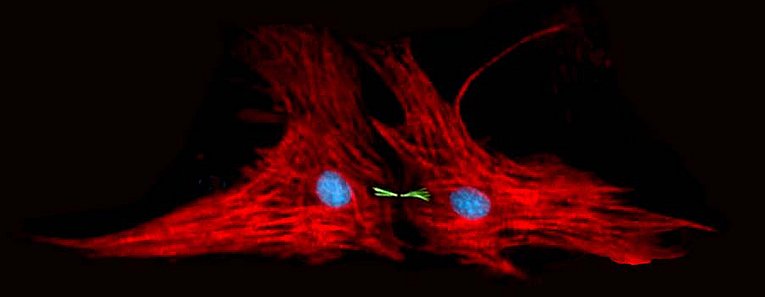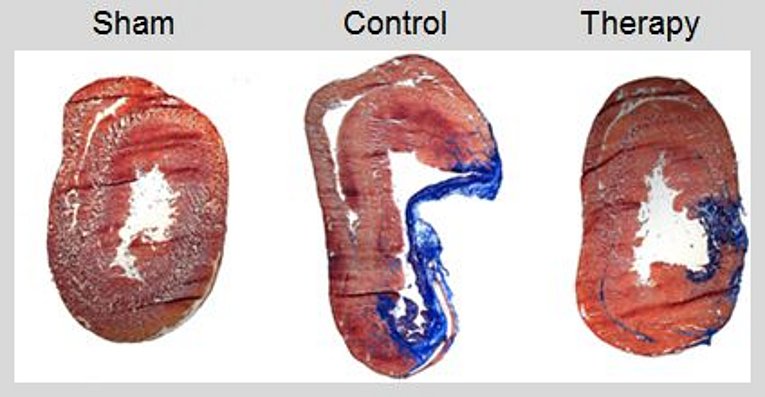Cardiomyocyte Proliferation
It is in general believed that the mammalian heart does not contain stem cells and that adult cardiomyocytes cannot proliferate. Therefore, the heart cannot regenerate but scars after injury. In contrast to mammals, hearts of zebrafish and newt possess the ability to regenerate by inducing the proliferation of cardiomyocytes. In mammals, cardiomyocytes proliferate only during embryonic development. Importantly, it has recently been shown that also mice can regenerate their heart through cardiomyocyte proliferation. However, this ability is restricted to newborn mice. Our experiments using the rat as a model have demonstrated that it is possible to induce adult mammalian cardiomyocyte proliferation by stimulation with growth factors and manipulation of downstream signaling pathways. Moreover, the treatment of experimental infarcts with growth factors and small molecule inhibitors induced cardiomyocyte mitosis, reduced scarring, and rescued function. Interestingly, we observed also the formation of novel blood vessels. In conclusion, our data demonstrate that the induction of cardiomyocyte proliferation could be a realistic option to regenerate the human heart. The long-term goal of our laboratory is to elucidate mechanisms controlling heart growth and the identification of growth factors that limit heart damage, increase the number of cardiomyocytes, and restore heart function.
In addition, we search for regulators of cardiomyocyte differentiation during development to enhance differentiation of different kinds of stem cells that can be used for cell therapy. We hope to elucidate fundamental mechanisms that are also relevant for the regeneration of other organs.


